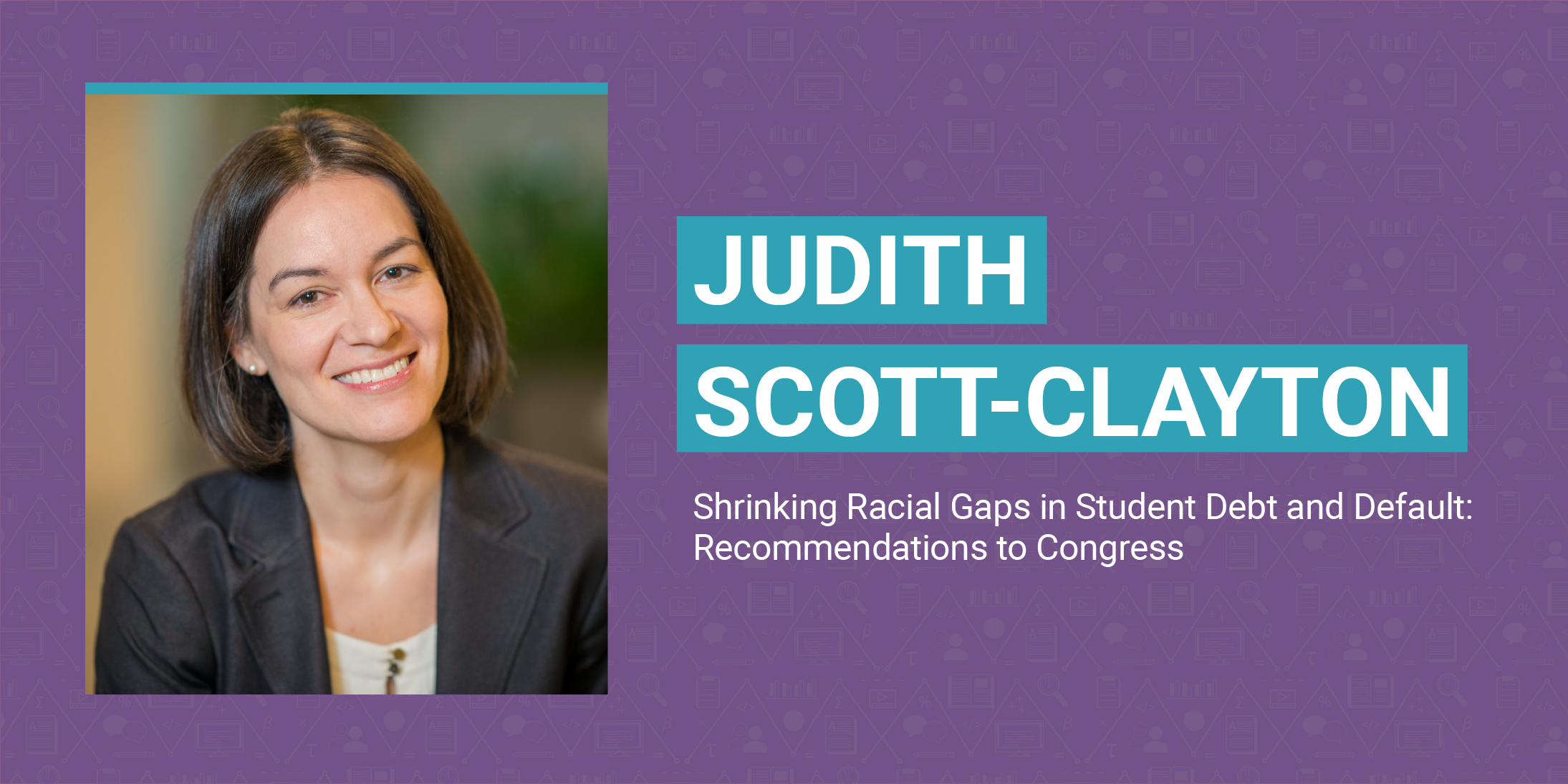Gaps in debt levels and default rates between White and Black college students have long been a concern. But they grew even more alarming after new data from the Department of Education allowed researchers for the first time to track debt and default for as long as 20 years after the start of college.
Analyses of this data by myself and others captured the attention of a group of U.S. senators, who asked dozens of experts for policy recommendations on how to shrink disparities in student loan outcomes and college completion. I laid out a series of proposals in a letter last month to senators Doug Jones (D-AL), Elizabeth Warren (D-MA), Kamala Harris (D-CA), and Catherine Cortez Masto (D-NV), which I summarize below.
How Big Are the Gaps in Debt and Default Rates?
Black college graduates start out owing more than their White peers, but the gap in student loan debt more than triples over the next few years. Growing interest and borrowing for graduate school lead to Black graduates holding nearly $53,000 in student loan debt four years after graduation, almost twice as much as White graduates.
The picture gets even worse further out from graduation. While cumulative default rates continue to rise for all borrowers between 12 and 20 years after students start college, Black graduates with a bachelor’s degree default at five-times the rate of White bachelor’s graduates—21% compared with 4%. Among all college students who started in 2003–04 (not just borrowers), 38% of Black students defaulted within 12 years, while 12% of White students defaulted.
Many of these students who defaulted attended for-profit colleges, where almost half of students default within 12 years of college entry. But even after accounting for student and family background characteristics (such as family income, wealth, and parental education); total amounts borrowed; college experiences (including type of institution attended, degree attainment, and college GPA); and post-college employment status and income, there remains an 11-percentage-point Black–White disparity in default rates.
How Can Policymakers Help Address These Gaps?
Here are five ways that policymakers could strengthen protections for current students and borrowers, as well as provide much-needed relief for those struggling now.
1. Provide more support to borrowers to increase utilization of income-contingent repayment plans, which offer significant protection against the worst outcomes of student loan debt.
Income-contingent loan-repayment options, including the newest and most generous REPAYE (Revised Pay as You Earn) plan, adjust borrowers’ monthly payments according to their income and ultimately forgive debts that remain after a set period of repayment. In theory, such plans can help borrowers of any race manage even relatively large amounts of debt, and they have been shown to reduce the risk of default. The paperwork burden currently associated with such plans can be daunting, however, and too often students do not learn about income-contingent options until after they are already in trouble—having missed payments, accumulated fees, and damaged their credit.
Some scholars have proposed automatically enrolling borrowers in income-contingent repayment and administering it via the tax system, so that payments adjust immediately and automatically to changes in earnings. While an overhaul of this sort would take time, in the meantime, the government could provide additional resources to support institutions and third-party nonprofit organizations that commit to helping borrowers navigate the paperwork required to take advantage of income-contingent repayment options.
2. Increase regulation of loan servicers to ensure they are providing high-quality, unbiased service to all borrowers.
Some of the unexplained Black–White gap in defaults may relate to the quality of loan servicing, which could vary by race or may simply have greater consequences for Black borrowers. Research has found that variation in the quality of individual agents who conduct loan-servicing calls has a significant impact on borrower outcomes. At the same time, loan servicers are facing a number of lawsuits accusing them of providing poor advice, in some cases steering borrowers away from the income-contingent plans described above. The federal government should reexamine loan-servicing contracts to ensure that they contain appropriate incentives for high-quality service. Providing evidence of race-neutral customer service should be considered an important element of servicer quality.
3. Continue and strengthen efforts to regulate the for-profit sector.
While it is certainly true that there are good and bad institutions in all sectors, the probability of experiencing a student loan default is dramatically higher for students entering for-profit institutions. My research shows that of all students starting at a for-profit institution, 47%—almost half!—experience a default on a federal student loan within 12 years of entry. That is nearly four times the rate of default experienced by entrants at private nonprofit four-year institutions (13%), public two-year institutions (13%), or public four-year institutions (12%). Since many students experience a default for the first time even beyond this 12-year follow-up window, these rates almost surely understate the proportion of for-profit entrants that ultimately experience a default. Unlike any other sector, a terrible outcome is a typical outcome for students entering for-profit institutions.
This institutional and regulatory failure hits Black students particularly hard. Black students are almost three times as likely as White students to start at a for-profit institution (24% versus 9%), and among Black students beginning at a for-profit, 63% experience a loan default within 12 years.
4. Consider targeted debt forgiveness to relieve borrower distress now, focusing on populations at greatest risk of default.
Many of the policy directions suggested above will take time to implement and show results. This is, of course, no reason not to pursue them. The challenges of student loan repayment are not going away anytime soon, and it is important to lay the groundwork today for better outcomes tomorrow. Still, what can be done to provide to relief to borrowers who are at risk or in distress now?
Targeted loan forgiveness may be a valuable tool in a broader package of solutions. In considering alternative proposals, I suggest focusing on small-balance borrowers who are at the greatest risk of default, rather than on borrowers with the most debt. Default risk is actually inversely correlated with the size of the loan, because borrowers with greater debt typically have higher levels of educational attainment. By focusing on small borrowers, the same amount of total relief can help a greater number of borrowers in distress.
Focusing on small-balance borrowers is also attractive from an equity perspective: It can be viewed as a way to enable past students to share in the benefits of recent efforts in many states to make the first two years of college tuition-free.
5. Use existing federal data sources to provide researchers and policymakers with better and more frequent data on student loan repayment patterns by race.
Finally, another policy effort that could yield results immediately is to make better use of existing federal data sources for research. To better understand possible causes, consequences, and remedies for racial disparities in student default, researchers and policymakers need access to better data on debt and repayment patterns by race. The federal government has the ability to make such data available now, at low cost.





